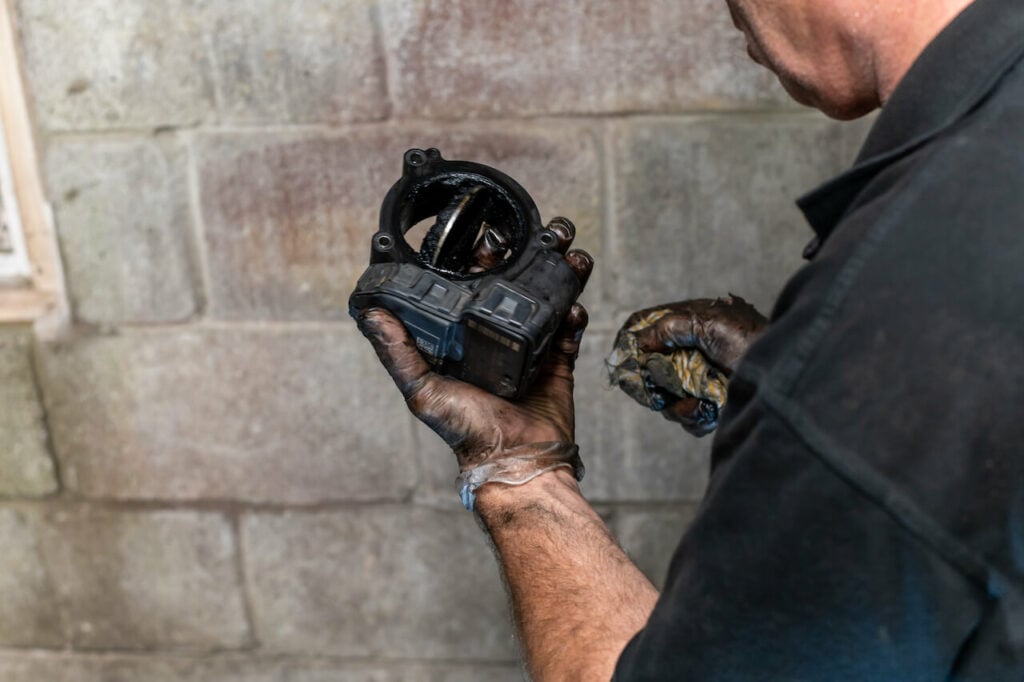Your exhaust gas recirculation system (EGR) and diesel particulate filter (DPF) are two components you may never have heard about if your truck is over ten years old.
The EGR system recycles exhaust fumes to lower combustion temperatures and reduce NOx emissions. It does this by sending a bit of exhaust gas from the engine’s exhaust manifold to the intake manifold, which lowers combustion temperatures.

In newer trucks, an onboard computer system controls and monitors EGR valves. This enables your mechanic to make necessary adjustments to keep your engine running smoothly.
A DPF is a device found in diesel engines that filters out pollutants and collects soot (carbon) particles. The system captures unburned or partially burned fuel from the exhaust and sends it back through the engine to be fully combusted.
These parts help reduce greenhouse gas emissions, but they can get clogged if not maintained regularly. When this happens, your truck’s power and fuel efficiency will decrease significantly.
The main sign of DPF issues is black smoke from the exhaust. You should also seek service if your engine makes loud popping noises or loses power.
DPF Cleaning and EGR Regen Service Solutions for Heavy-Duty Trucks
Sometimes, it’s simpler to replace these parts entirely rather than trying to clean them. When your DPF fails, exhaust temperatures will rise and disable the emissions reduction system. The good news is this will not cause any permanent damage.
Our mechanics will carefully inspect your EGR system to determine if it’s dirty or clogged. Replacing them is easy, takes a few hours, and can boost your truck’s fuel efficiency and power.
“Deleting” your EGR/DPF is a term that refers to disabling the emissions component of your engine. The goal is to stop exhaust gases from going to your engine. However, this comes with its own set of problems.
Frequently Asked Questions
The Exhaust Gas Recirculation (EGR) and Diesel Particulate Filter (DPF) systems are critical emissions control components in modern diesel engines. The EGR system works by redirecting a portion of the exhaust gas back into the engine’s cylinders, which lowers combustion temperatures and significantly reduces the formation of nitrogen oxides (NOx). The DPF system acts as a filter in the exhaust stream, designed to capture and trap harmful soot and particulate matter before they are released into the atmosphere.
As these systems filter your truck’s exhaust, they eventually fill up with the soot and particles they are meant to remove. Thus, impairing their function. Similarly, the DPF accumulates soot and ash from the combustion process. While the DPF is designed to “regenerate” or burn off this soot, it cannot eliminate the incombustible ash. Professional cleaning is essential to remove these stubborn deposits, restore proper exhaust flow, and ensure the systems continue to function efficiently and in compliance with emissions standards.
A clogged EGR or DPF will trigger several noticeable performance issues. You will likely see a decrease in engine power and a significant drop in fuel efficiency. Your truck’s dashboard may display specific warning lights, such as the DPF light or the Check Engine light. Your truck may also enter a “limp mode” with reduced power, or you might notice the engine’s cooling fan running more frequently than usual as the system attempts to initiate a regeneration cycle. Addressing these signs promptly is crucial to prevent costly damage to the engine or the emissions system itself.
Schedule Semi Truck EGR/DPF Service at Inland Truck & Equipment
To schedule service, fill out the form below or find the nearest location to you and get in touch.

